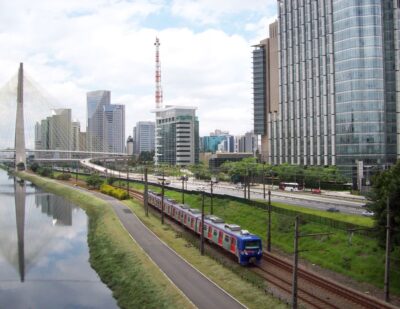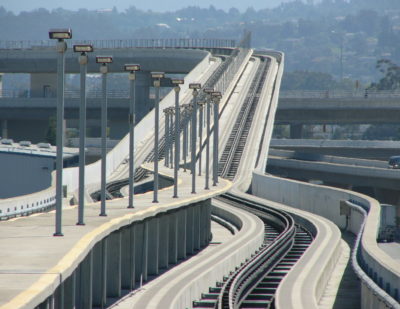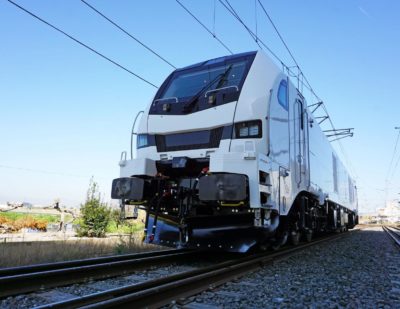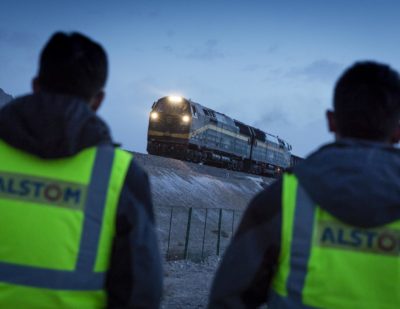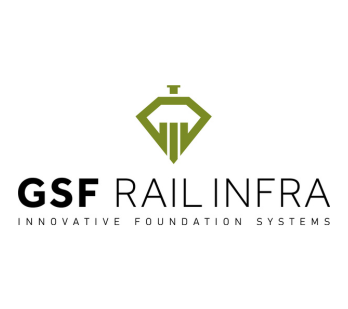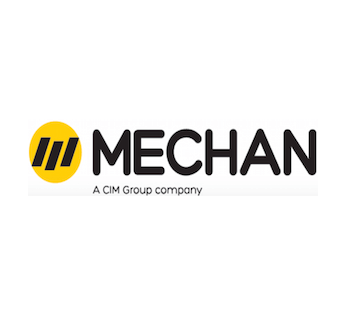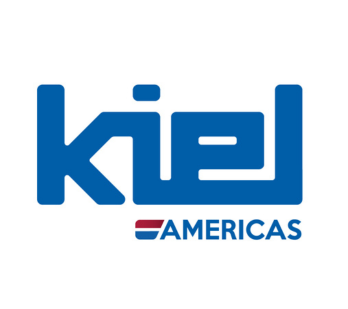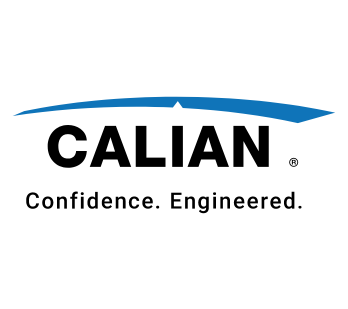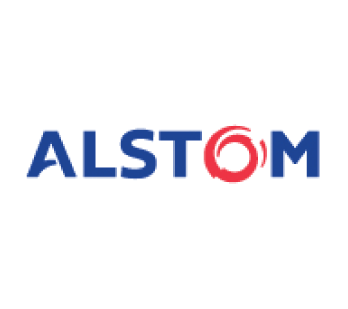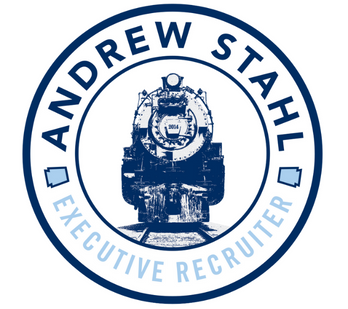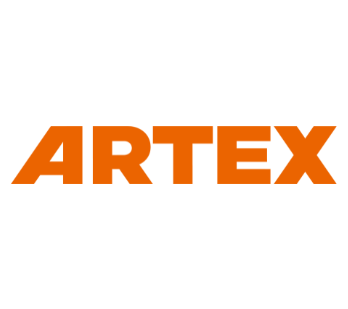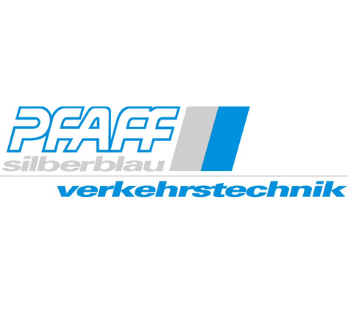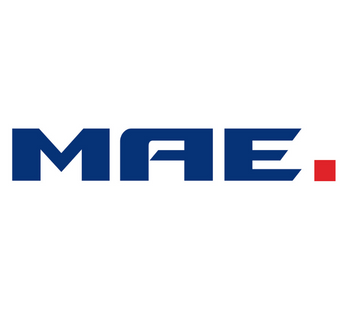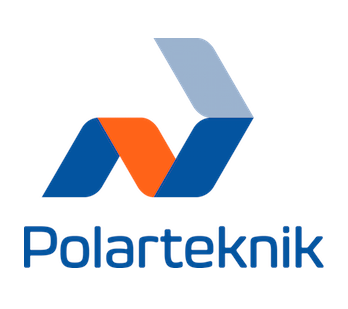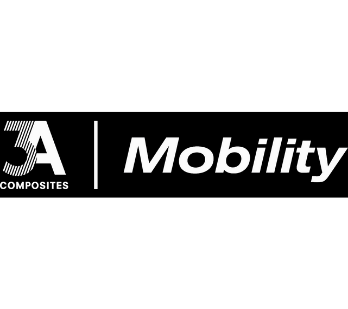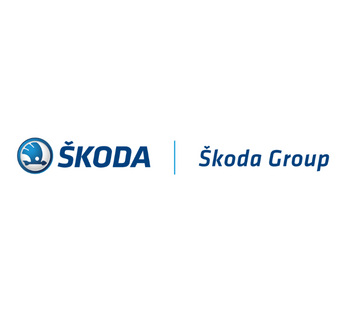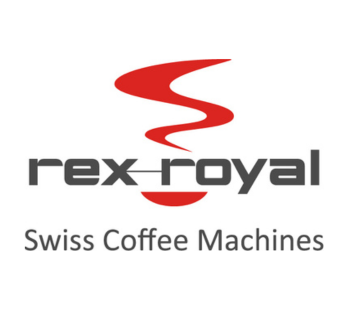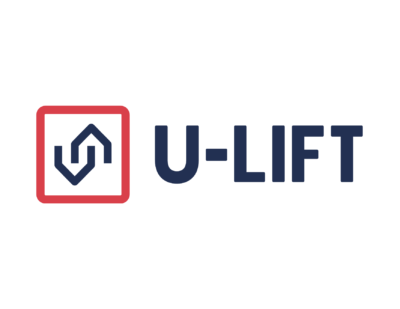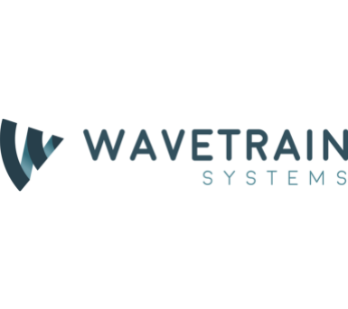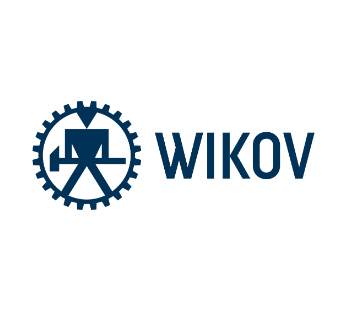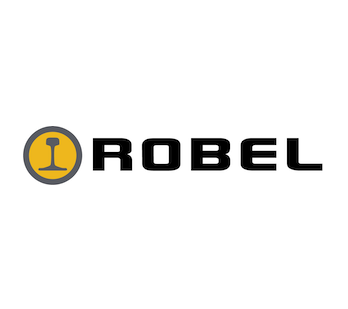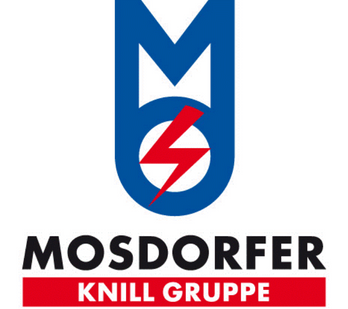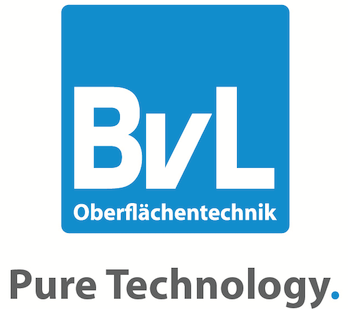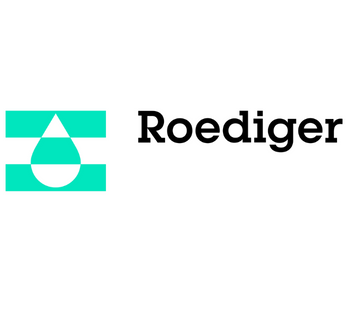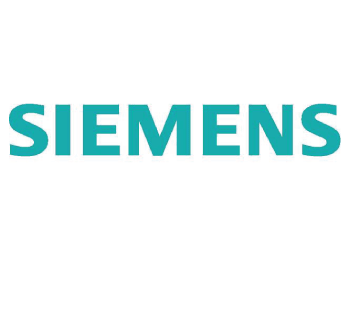Bringing a Freight Line Back to Life in Colombia
Colombia is a country that has seen more than its fair share of political struggles. At the same time it is filled with opportunities, including for the rail sector. Railway lines in the country have fallen into disuse. One company, Holdtrade Atlantico, wants to reinstate a freight railway line in the country. Holdtrade Atlantico’s co-founder Leonardo Suarez spoke to Railway-News about his company’s plans, their benefits and the opportunities from Colombia as a whole.
Railway-News: You have plans to operate freight trains in Colombia. What gave you the idea and can you go into a bit of detail about your vision?
Leonardo Suarez: In 2011 the former president of Colombia visited the UK and made an open invitation to British companies to take advantage of the infrastructure opportunities that were coming up in all sectors.
We realised the Colombian government was keen to bring back to life strategic portions of the former state-owned railway network, hence, decided to set up a local operation and with the assistance of the British government, investigate further.
Colombia is a country where the big cities are located inland, high up in the Andes mountain range. For instance, Bogotá – a city of over 8 million people – is isolated on a plateau at 2,500 meters above sea level and 1000km from either the Atlantic or the Pacific.
Colombia’s dependency on imported goods is astonishing. Despite being a country blessed by year-round sunshine, being located in the tropics, it imports a great amount of agricultural products. However, the country is finding niche markets for agricultural products where it can compete against well-established players; good examples of this are coffee, avocados, flowers, and bananas, to name a few. Those goods are harvested inland with distances of over 1,000km to the main ports, so their export requires a competitive transportation solution.
On the other hand, Colombia is a country of 45 million people that relies on imported manufactured goods. Moreover, it is a country where social mobility is taking place at a fast pace. For instance, between 2002 to 2017 the middle class increased from 10% of the population to almost 35%, hence, the demand for imported products is rapidly increasing, increasing demand on reliable and competitive modes of transport for them.
Furthermore, almost three quarters of Colombia’s population lives in big cities, creating focal points for transportation in certain areas of the country.
Recently, the country was accepted as the 37th member of the OECD, hence it needs to tackle its challenges to render it more competitive. Reducing transportation costs is a key part of these challenges. We realised that being at the forefront of changing the logistics systems in Colombia was a great opportunity, as trains are not only the most cost-effective, but also the most environmentally friendly way to move cargo over long distances!
Our vision is to become the number one freight rail operator in country and a key actor in the revival of the much-needed countrywide railway network.
RN: You’re planning on using an existing railway line. When was it built and what is its current status?
LS: The state-owned Colombian railway network reached its peak in the mid-seventies when the country had almost 3,500km of track connecting the country’s major cities and the two oceans. Today the country has less than 400km of operational track.
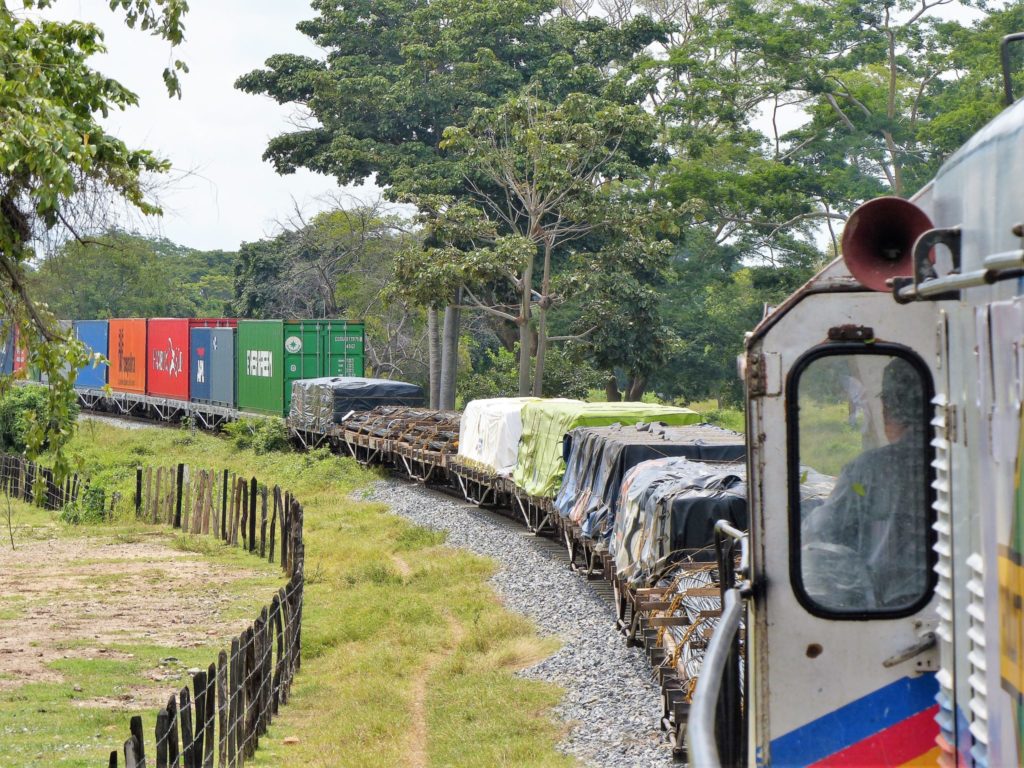
The great majority of the national railway network in the country goes up and down the Andes mountains, where tight curves and steep gradients are the norm. This is actually the reason why Colombia has 3 feet narrow gauge track. One needs to remember that in the middle of the 19th century narrow gauge was the most cost-effective way to build railways for those challenging topographical conditions.
In the 1950s a 767km section of railway track was built over flat terrain between La Dorada and Santa Marta. La Dorada is only 200m above sea level, hence, this track section is extremely flat. This section has been known since as the Central Railway.
Due to bad public policies and the lack of safety outside the big cities the railway infrastructure countrywide was abandoned. In 1999 a group of coal mining companies located at the northern part of the Central Railway realised that they could make use of that abandoned infrastructure and negotiated with the government to become the concessionaire of almost half of the national railway network in exchange for being able to use the 245km they needed to move their coal between Chiriguana and Santa Marta.
One of the concessionaire’s obligations was to rebuild and maintain almost half the former national railway network. They went for the low-hanging fruit, which was the flat section of track between Chiriguana and La Dorada south of the section they use to haul their coal. Unfortunately, weather-related damage from the heavy rainy seasons in 2010–2011 curbed their enthusiasm, at which point they renegotiated their railway concession and handed the unused infrastructure back to the Colombian government.
When the government got the railways back it decided haphazardly to fix them and bring them back to life, starting first with two sections of track, with La Dorada to Chiriguana being the most important one. This section is strategically located: 90% of the population of the country live less than 200km away from it, making this transportation axis the spine of the country!
RN: Colombia has had decades of political instability and unrest. How does an environment like that affect your plans? The Colombian government still has trouble with FARC dissidents, for example.
LS: This project would have not been able to take place 20 years ago. No one will argue with Colombia being at the verge of being a failed state at the turn of the century, but luckily the country changed its trajectory since 2002. Thanks firstly to a government that was adamant to decimate the insurgent groups, and secondly to a subsequent government that had its focus on rebuilding its institutions. This change has put the country in the world’s spotlight for things it had not been known for before, such as a place to visit and to invest. As an example, Colombia was named by the Times as second destination to visit worldwide last year!
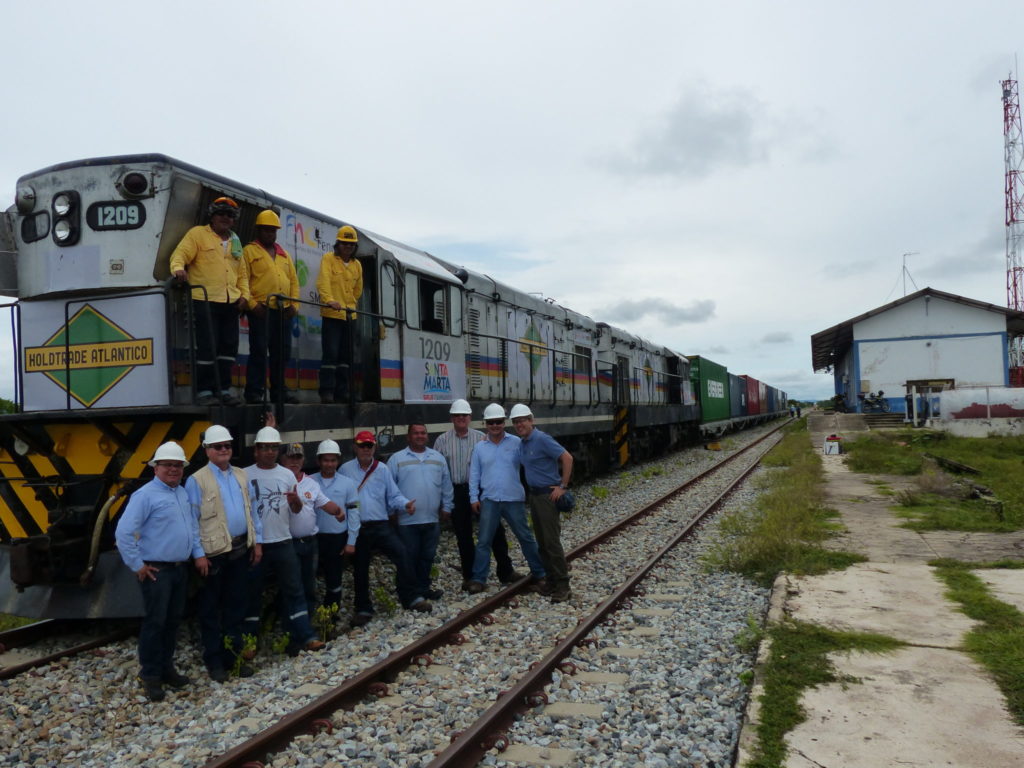
A proof of this is that by 2011, when we started looking at this opportunity, Foreign Direct Investment in Colombia had boomed to US $13.5 billion from around $2.4 billion in 2000.
Colombia has come a long way since, but it is true that there are still key challenges. We firmly believe that the current government will continue building on the success of its two predecessors and that it will keep learning from their mistakes and will work even harder on strengthening the present law enforcement outside the big cities, consequently making Colombia a place even more attractive to foreign investment.
It is also true that Colombia has still a long way to go to be a fair and equal society, however an opportunity to run trains over such a long distance – to put this in context we are talking about the same distance than from Dover to Edinburgh – will never again materialise in the developed world. Consequently, we weighed the pros and cons and reached the conclusion that having the first mover advantage is an opportunity one cannot miss.
Finally, we truly believe that this project is a big contributor to assist the country to overcome its challenges, railways worldwide are assets that unify people. Moreover our goal is not to focus exclusively on moving mineral resources but to carry a wide range of general cargo instead. We see this as a project for the benefit of the people of Colombia and to assist in improving the country’s competitiveness.
RN: What are the key benefits of reviving this railway line over how freight is currently transported in the country?
LS: Cost is a key benefit, a multimodal solution that involves trains will provide customers with a transportation solution that is between 5 and 12% cheaper than current alternatives.
Pollution is also a key aspect, moving cargo by train will mean cutting fuel consumption by almost 90%. Less diesel burned by trucks equals fewer contaminants being released into the atmosphere.
Efficiency is another key aspect; one train will carry the same cargo as 67 trucks. Those are 67 sets of cargo documents that need to be processed coming in and out of the port, with the train requiring only one, so it will make logistics more efficient and will help to decongest a rather busy port.
Another important benefit is being able to have a more reliable service. Trains will have a regular timetable, which means customers will have a more reliable service which will allow them to plan their supply chain better and reduce inventory.
RN: Where are you at with this project? Have you received much support? In particular, how have you made use of the UK Prosperity Fund? What support have you had from the Colombian government?
LS: The refurbishment of the railway track by the Colombian government has been taking its time. The plan was for it to take a maximum of two years, but it looks like it is going to be more like six years in the end.
After spending several millions of pounds over five years it looks like finally, we have lined up all the ducks in a row. We are only awaiting some key aspects of public policy to be clarified by the Colombian government.
We have already run a trial train demonstrating it can be done (you can watch a video here).
Rebuilding a railway to allow any private company that has the technical and operational expertise to run trains – not only us, as we truly believe that competition and not more monopolistic positions is precisely what Colombia needs – brings its own challenges. Frankly, Colombian public institutions are not up to speed as far as running a railway network with multiple operators is concerned; therefore, the UK government has been instrumental in assisting its Colombian counterpart to build capacity in the relevant institutions and learn from the UK’s vast experience and also its mistakes.
It was precisely the UK Prosperity Fund that allocated around £7 million to support the Colombian government to structure their long-term plans on the railway sector. Without this investment a project like this would be impossible.
RN: What are your next steps?
LS: We are currently raising funding to commence operations. The amount required is in the region of USD $5 million in exchange for equity in the company.
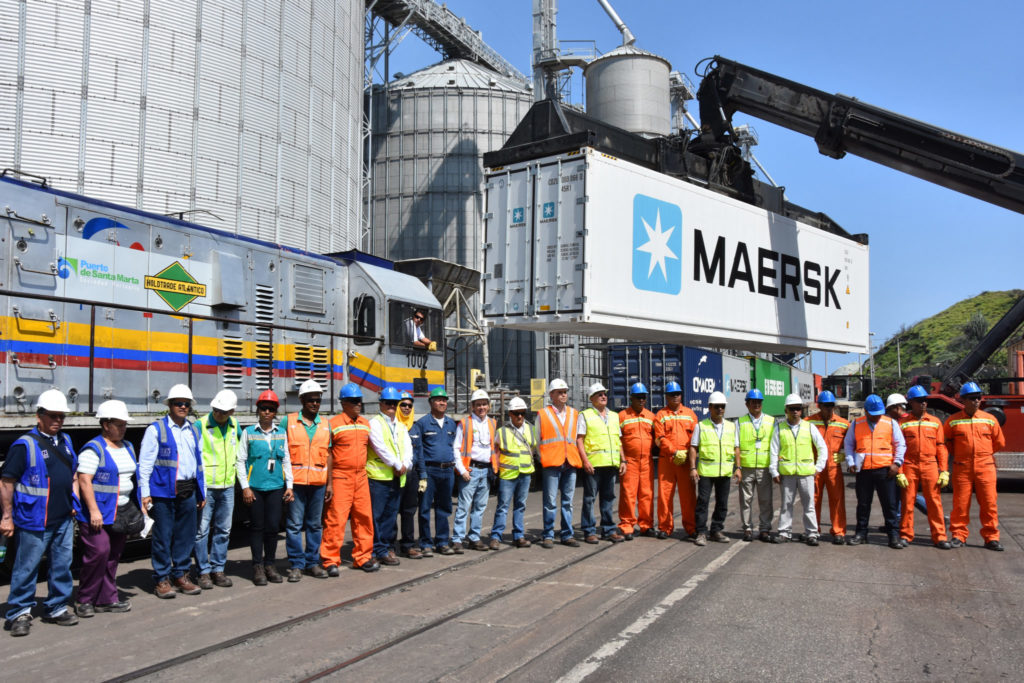
To achieve that we have appointed a winning team, technical advisor is TIL (Transport Investment Ltd), a group of transport specialists with first-hand, high-level experience of rail operations in the UK, Asia, the EU and North America.
London-based fintech company Envestors – a FCA regulated corporate adviser in the UK – is managing the planned fundraising, whilst one of the UK’s top legal firms, CMS Cameron McKenna Nabarro Olswang LLP, has been retained as legal adviser.
Should anyone be interested in being part of this, they can find further details at our investment platform via holdtrade.envestry.com
RN: What are the most difficult hurdles you still have to overcome?
LS: The Colombian government has secured funds to look after the track in the short term from the Colombian treasury. A tender covering these works was recently awarded to Ibines Consortium by the National Infrastructure Agency.
However, this is not enough as anyone planning to run trains in Colombia needs to have certainty that the Colombian government has in place the mechanisms that will guarantee that the track remains operational and well looked after in the long term whilst making this mode of transport cost-competitive against other means of transport such as the river. The question is: how to define the mechanisms to ensure this is the outcome we expect from the outcome of the project funded by the UK Prosperity Fund.
A key milestone is a new track usage tariff resolution by the Colombian government, which will incentivise the use of the railway, which is expected in the coming months.
In addition, we have seen that the Colombian government is finally taking steps in the right direction. In April this year FDN, a state-backed financial corporation that specialises in infrastructure project finance and structuring, launched a tender where world-class transport consultancy firms bid to assist the government in devising the mechanisms guaranteeing the long term viability of the railway infrastructure. We are looking forward to seeing the outcome.
RN: What rolling stock do you intend to use?
LS: A fleet of rebuilt diesel locomotives (EMD GT22) plus a mix of container flats and open gondola wagons has been obtained from South African rail engineering firm Genrail Pty Ltd who will provide the rolling stock and will be in charge of in-country maintenance. Initially two locos and 51 wagons will be used, rising to 13 locos and over 600 wagons by 2026.

